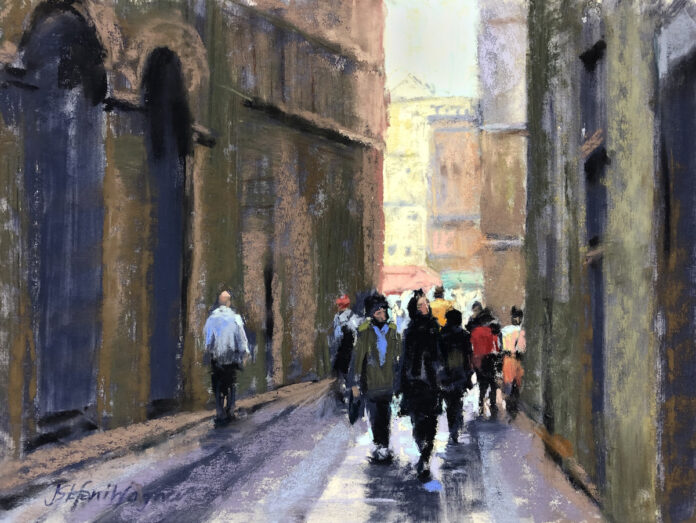The following is part of a series that features the best artists who are teaching others how to paint through online workshops at PaintTube.tv. Check out Jill Stefani Wagner’s “5 Step Pastel Painting” workshop here.
Sketches for Pastel Painting: Jill Stefani Wagner’s Visual Brainstorming
by Laura Vailati
Art enthusiast and Editor at Miami Niche
“Before you can break the rules you need to know the fundamentals of art,” said artist Jill Stefani Wagner, who was one of the field painter faculty members at the 10th Plein Air Convention and Expo (PACE), in Denver, Colorado, and will be among the faculty members in the third edition of Pastel Live in August 2023.
When Jill decided to study art she soon realized that in university classes of the late 1970s and early 1980s, the teaching of traditional art was not valued compared to the “freedom of expression” typical of certain artistic currents.
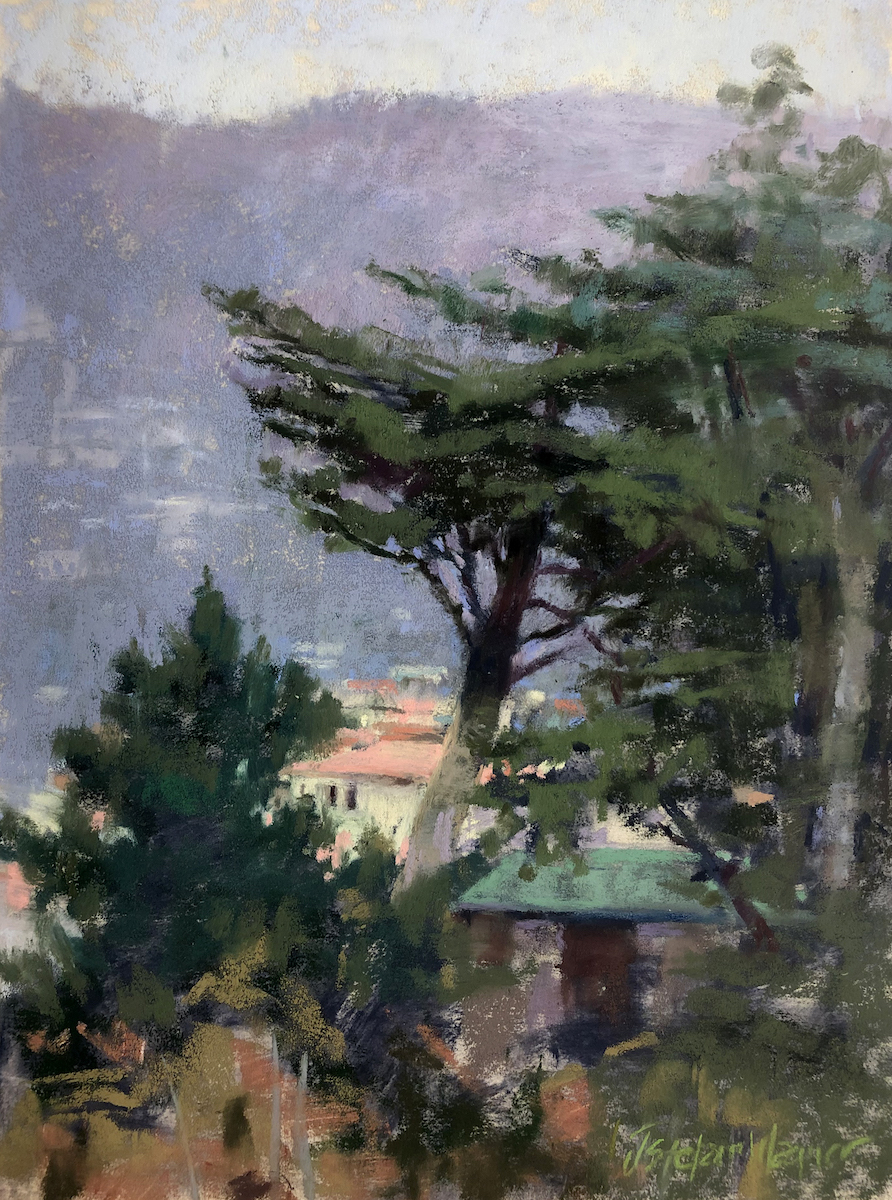
Born and raised in Michigan, she earned a BFA in Painting with a Major in Art History at the University of Michigan Art School. In her early 20s, however, the desire to become financially independent led her to take a Graphic Design course, which was followed by a long career in advertising.
Working her way up through the ranks with persistence to distinguish herself as an advertising professional, Jill became a creative director and later Vice President of an ad agency. She then decided to open her own agency: an inspirational, but also very stressful environment, especially when she found herself balancing work and family commitments.
The profession engaged her for almost 30 years. There, she was able to learn professional practices that she later translated into her artistic career: from the organization of materials, to compositional rigor, to adhering to client deadlines.
This has profoundly marked her way of working and is greatly appreciated both by the gallerists who represent her and by institutions, such as the Pastel Society of America and the International Association of Pastel Societies (of which she is Master Circle status) to name a few.
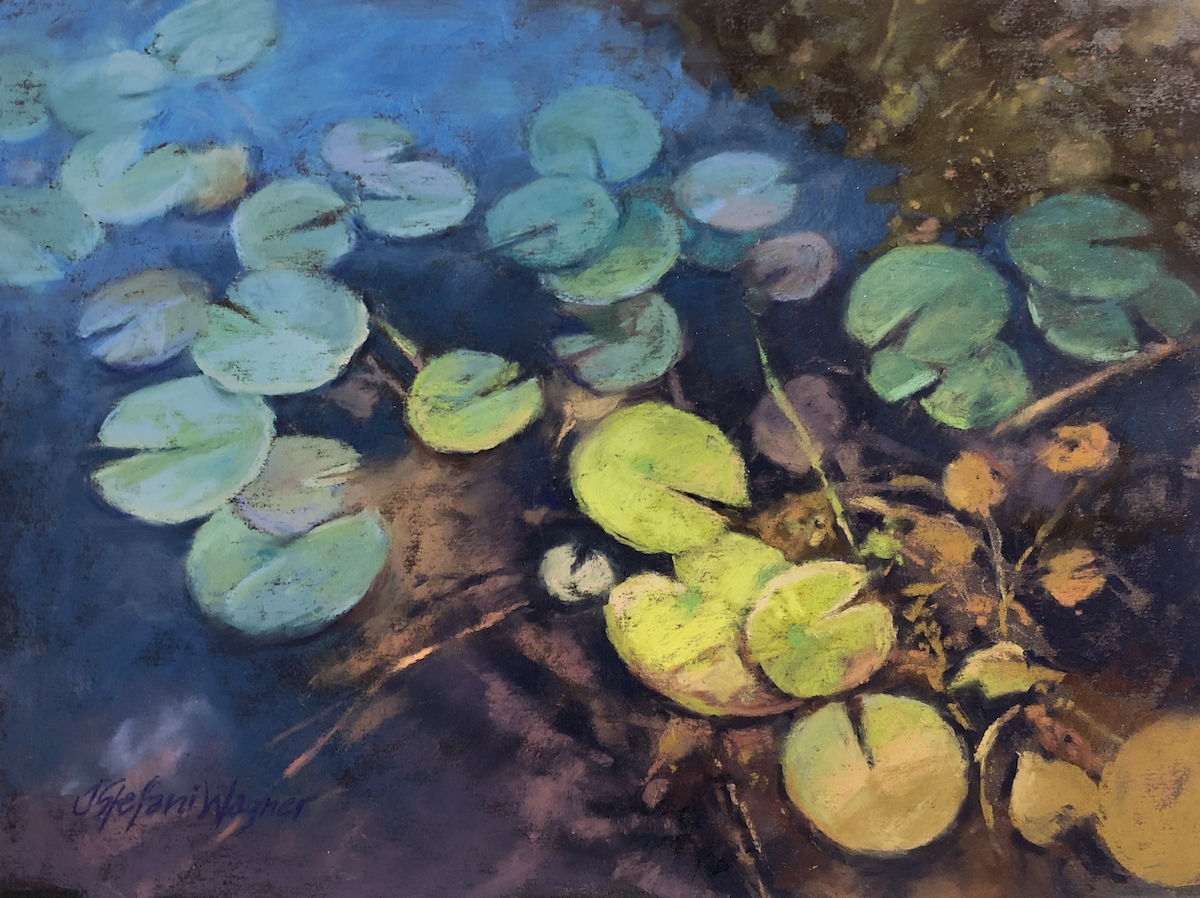
Despite her day job, the dream of devoting herself completely to art had never left her, and her dormant desire took shape when she accidentally attended the Door County Festival in Wisconsin: observing the many artists working en plein air, she realized that was the kind of art she wanted to pursue, working immersed in nature. It was a way to channel her passion for art into her love of outdoor activities. (Ten years later Jill was honored to be an invited artist of the exclusive Door County Festival.)
She then began taking targeted art classes with different artists, each of whom left a piece of their self within her, in particular: Terri Ford and MaryBeth Koeze. It’s to the former – a pastelist extraordinaire – she gives credit for passing on to her the principles of composition and confidence in color drafting. To the latter – her mentor and artist with a passion for floral paintings – she recognizes the importance of some valuable suggestions that are her staples to this day. To both, she acknowledges their educational approach because, she says, “they coached me to paint my own vision; I wanted to be me.”
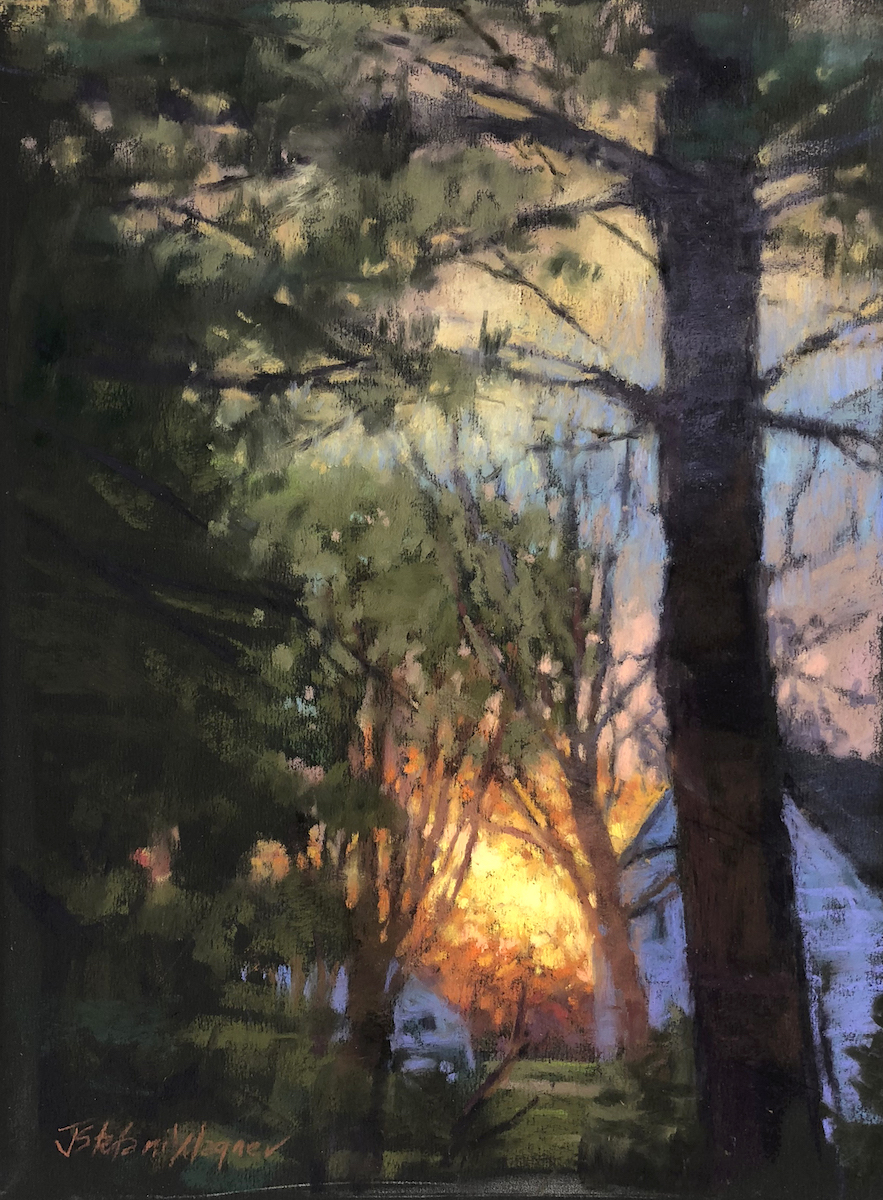
On Painting Composition
Jill’s approach to her pastel painting compositions harks back to the world of advertising. There, the brainstorming process begins by asking questions whose answers represent her “love notes”: “What do I LOVE about that scene? Why does it make me want to paint it?”
This is followed by using notan sketches using big shapes, and white, gray, and black values.
Sketches are also the starting point when she works from photographic reference, or when she paints en plein air with a tight timeframe: “When working en plein air there are so many stimuli, opportunities, and options that I would like to paint everything, but sketches help us in this focus,” she said. For Jill, the compositional process of pastel painting represents a kind of magic in the making.
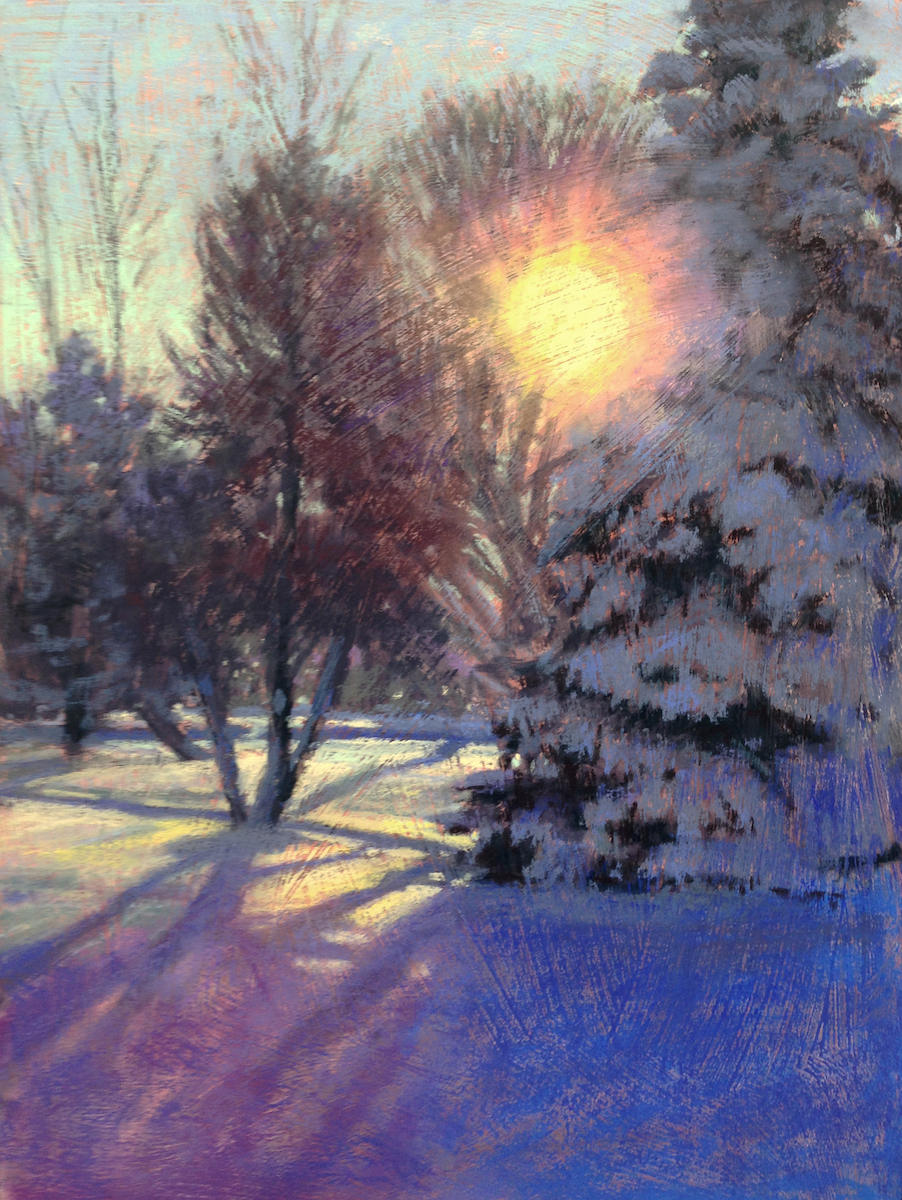
Having identified the key concept, she then creates the drawing on the paper, starting with a monochromatic underpainting, sometimes done in watercolor, and playing on the opposite color of the composition. “When you think about colors you have to think in a different way because colors only exist in relation to those next to them,” she said. Jill also likes to experiment with a black sanded paper, which serves as a base and from which she begins to derive the lights, just as she does with white paper with watercolor.
As for her palette, the artist calls colors “an obsession” and has thousands of them, divided by colors and values and distinguished into soft, semi-hard, and hard pastels, with which she defines details. However, she limits herself to using 20-25 colors per painting, letting the brilliance of the pigments emerge individually, without obscuring it in overlapping layers as is the case with oil.
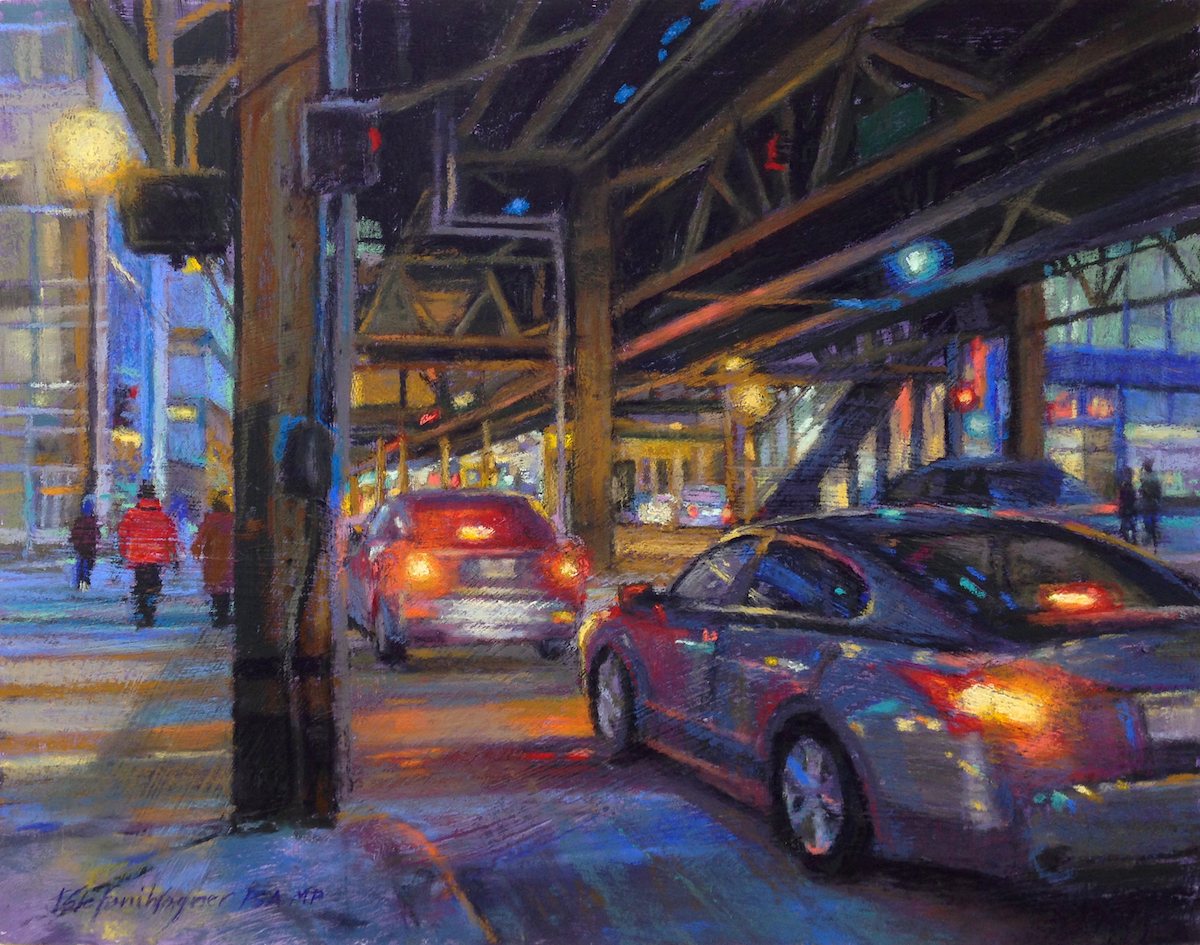
While Jill has a long history in oil and watercolor, she recognizes pastel’s extraordinary qualities due to the medium’s versatility, the purity of pigments, the rapid compositional execution, and the need for no medium.
On the strength of her personal experience, she maintains that relying on the teachings of experienced pastelists not only saves valuable time but also drastically improves one’s skills, adding, “Pastel Live is the perfect way to do that!”

